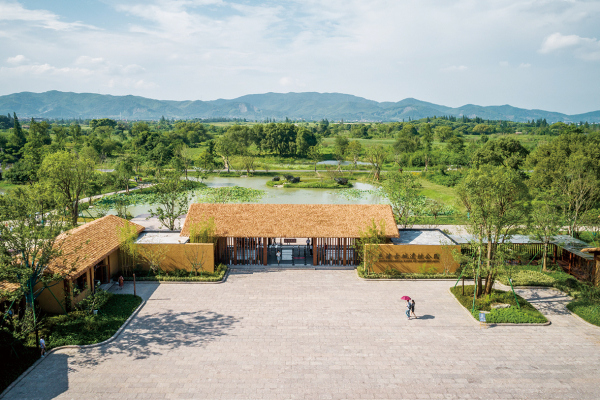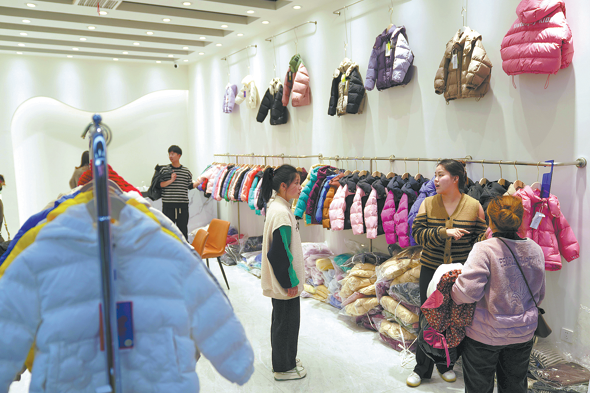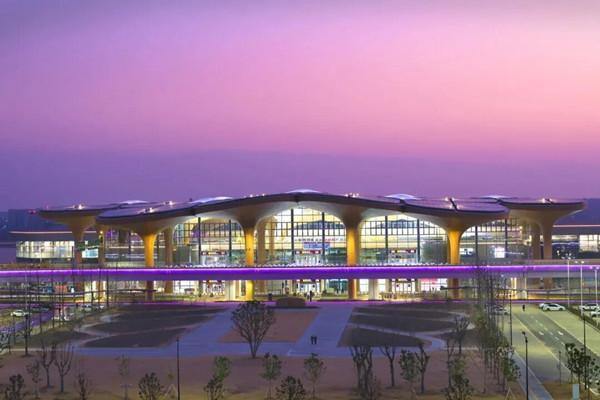
To see the Archeological Ruins of Liangzhu City, which lies in the northwest of Hangzhou, listed among the many development projects of the Zhijiang Art Corridor is not a surprise at all. Lying underground for tens of centuries before being uncovered and then made a world heritage, the Archeological Ruins of Liangzhu City has now become a “sacred place” to experience and appreciate the splendid “5,000-year Chinese civilization”.
It is often said that to see the past 1,000 years of China, one should go to Beijing, to see the past 2,000 years, one should go to Xi’an, and to see the past 5,000 years, one should go to Liangzhu. Dating back about 5,300 years, the Archaeological Ruins of Liangzhu City is the largest and best-preserved city ruins with both city walls and the water conservancy system and was inscribed on the UNESCO World Heritage List on July 6, 2019.
Covering an area of 14.33 square kilometers, the ruins are divided into four areas, namely City Site Area, Yaoshan Site Area, Low Dam on the Plain–Causeway in Front of the Mountains Area, and High Dam at the Mouth of the Valley Area. At present, only the core part of the City Site Area, a size of 3.66 square kilometers, is open to the public, which is composed of ten sections, including the city gates and city walls, the archeological experience zone, Fanshan Imperial Tomb, among others.

On the morning of a late summer day, the weather is still sultry, but throngs of tourists have already gathered at the entrance to the Archaeological Ruins of Liangzhu City. Elderly people who came here by shuttle bus, families of three or four in their private cars, and busloads of students on their field trips. They stand in line to check in, their tickets reserved a week in advance, for the number of visitors is capped at 3,000 per day, which has undoubtedly heightened their anticipation for the following “pilgrimage”.
Led by their parents, children on summer vacation carefully observe and examine the simulated scenes along with the city gates and city walls, among the waterways and workshops, and in front of the Fanshan Imperial Tomb. They are also able to personally experience excavating the Liangzhu ruins and imagine what the Liangzhu kings felt when they resided in the palace 5,000 years ago. Since the summer of 2019, seventh graders all over the country have also been able to read up on the ancient ruins in their history textbooks.

Standing in the Outer City of the ruins, the site of the ruins is more akin to a wetland park. In fact, it is generally referred to as a park, an archeological park, more specifically, and the development of the park follows the principle of “protection first and foremost, and archeological work trumps everything”. Therefore, only a handful of buildings can be seen on the ruins. Relying on the original water conservancy system that has been later treated, a comprehensive wetland system has been restored. Now, the park is densely forested, with crisscrossing rivers and crooks, in which water plants grow with exuberance. In large swathes of land is also planted rice, to demonstrate unique features of the rice-cultivating agriculture of the Liangzhu culture as its economic base. Indeed, the rice fields have drawn a multitude of rare birds to settle as their habitat.
“Close to my home, the venues for the 2022 Asian Games are being built,” says Mr. Qi, who lives in the Xiaoshan district in the southeast of Hangzhou. “Then, on the other side of Metro Line 2 is the 5,000-year-old Liangzhu.” On any weekend, all Mr. Qi, together with his children and family, has to do is hop onto Metro Line 2 before it takes them to the Liangzhu Museum and the Archeological Ruins of Liangzhu City, and transports them back into history. “It is such a wonderful feeling to travel back and forth between modernity and history and touch the root and soul of the Chinese nation,” according to Mr. Qi.
To the roots, the Chinese people always return. A Liangzhu native, Ms. Mei Jiaoyin has been studying dance since she was five years old. She had been staying abroad for many years when, in 2018, Ms. Mei returned to Liangzhu and joined the campaign for the Archeological Ruins of Liangzhu City to become a world heritage site by telling the Liangzhu story through dancing. “Out of so many choices, I’ve finally decided to settle down in Liangzhu,” Ms. Liu, who worked as a volunteer for the campaign, is looking forward to her new life. “I’ll soon move into my new apartment, which is only a stone’s away from the China Academy of Art, and a couple kilometers’ walk from the ruins.” For her, choosing to live in Liangzhu is simply the best of all worlds, material, spiritual, artistic, and cultural.
It is thanks to people like Ms. Mei and Ms. Liu that Liangzhu has developed into what it is today. In an age when the public cares more about heritage, history, and culture, the story of Liangzhu is ever more relevant.
“I’m no expert on the research on Liangzhu,” Colin Renfrew, a renowned British archeologist, once said after he had visited the ruins for the third time, “but I’m its admirer. To me, the Archeological Ruins of Liangzhu City is one of greatest prehistoric sites not only in China but all over the world.”




